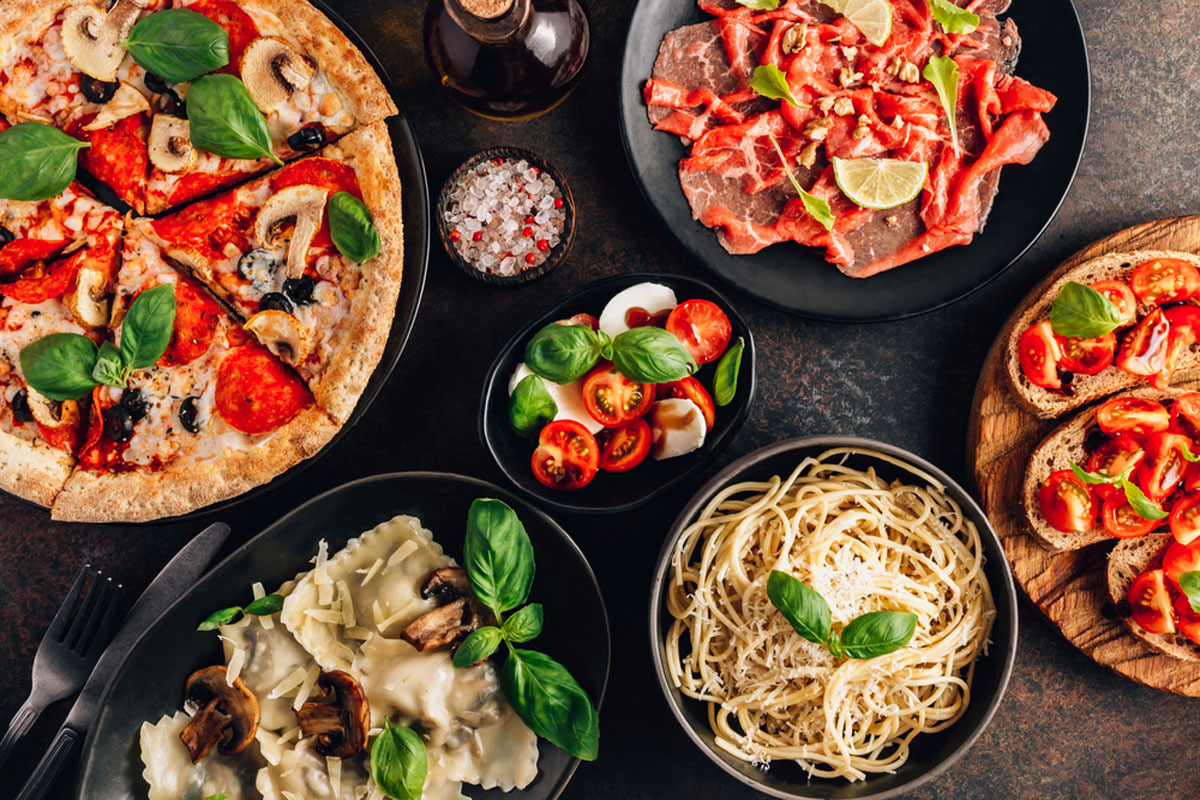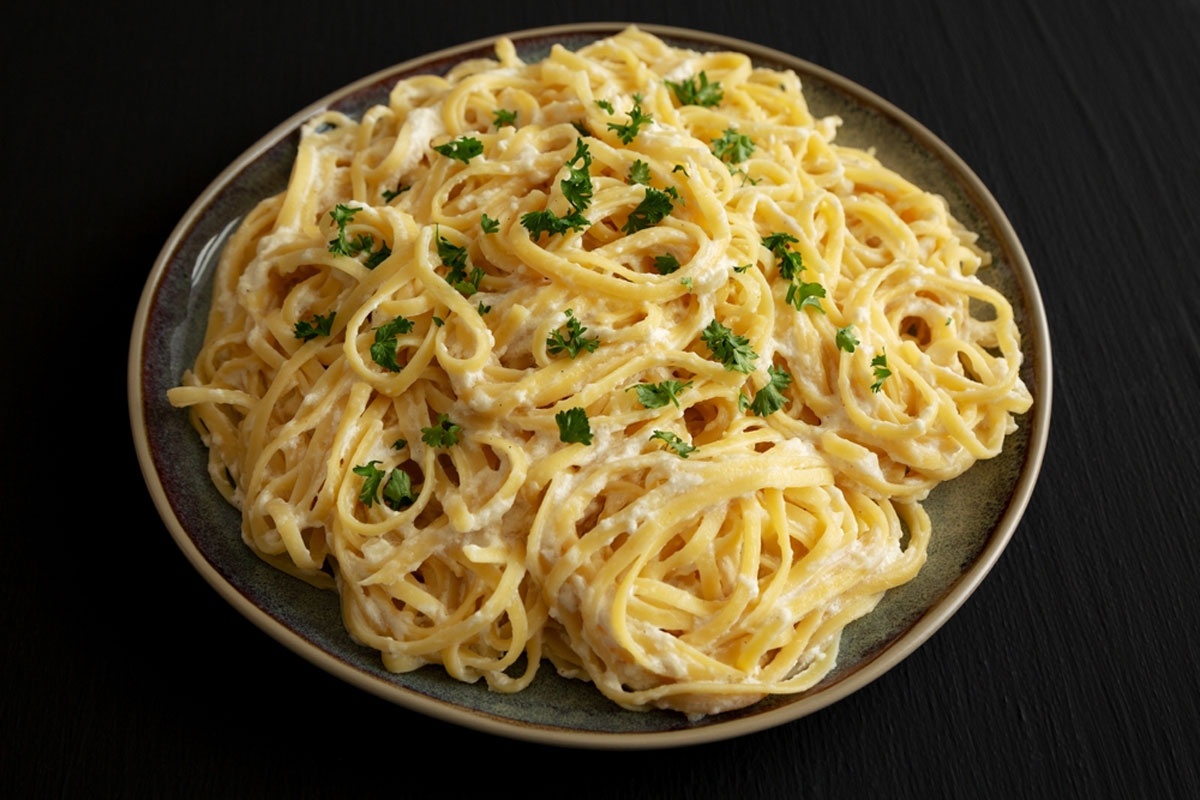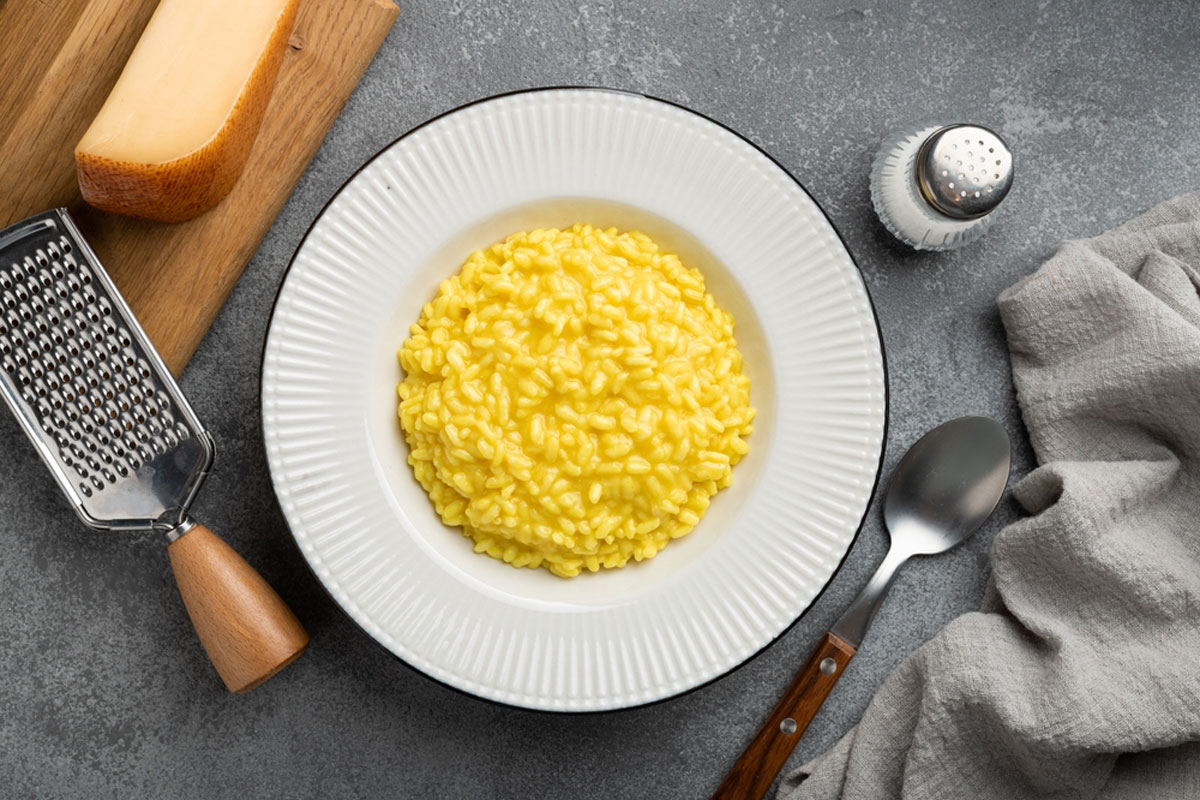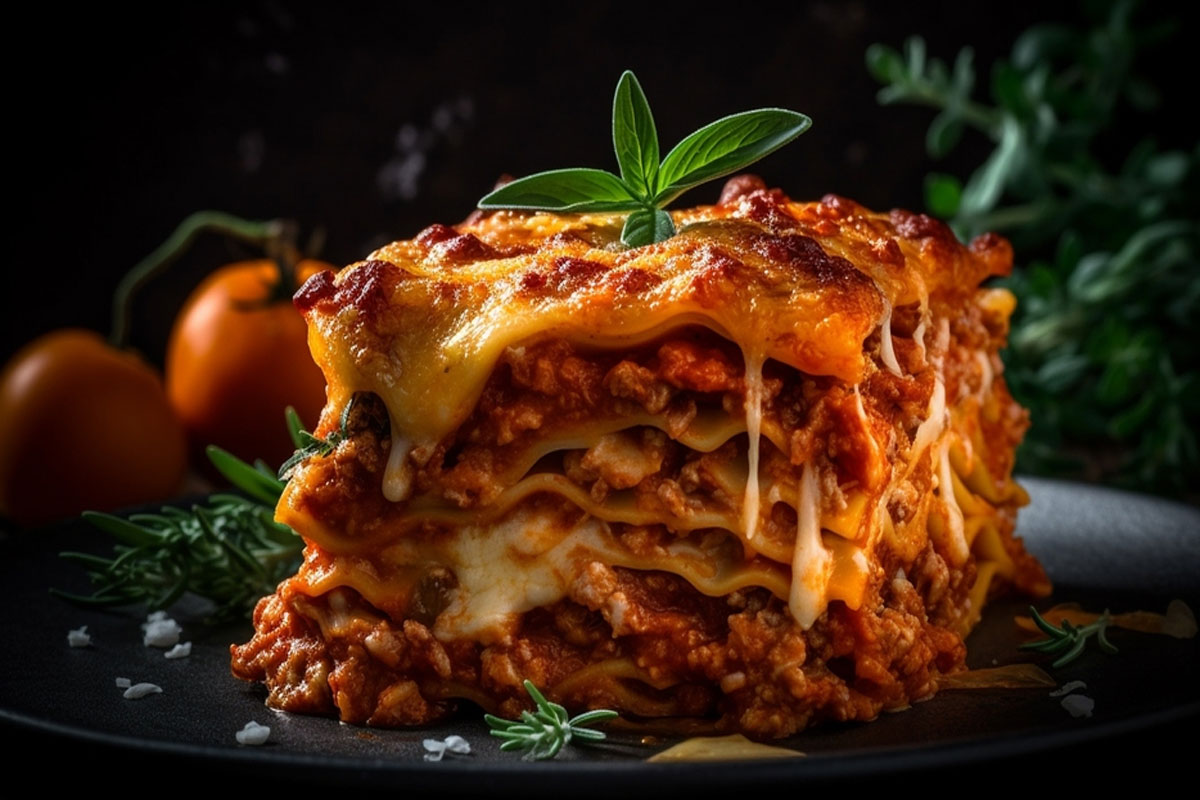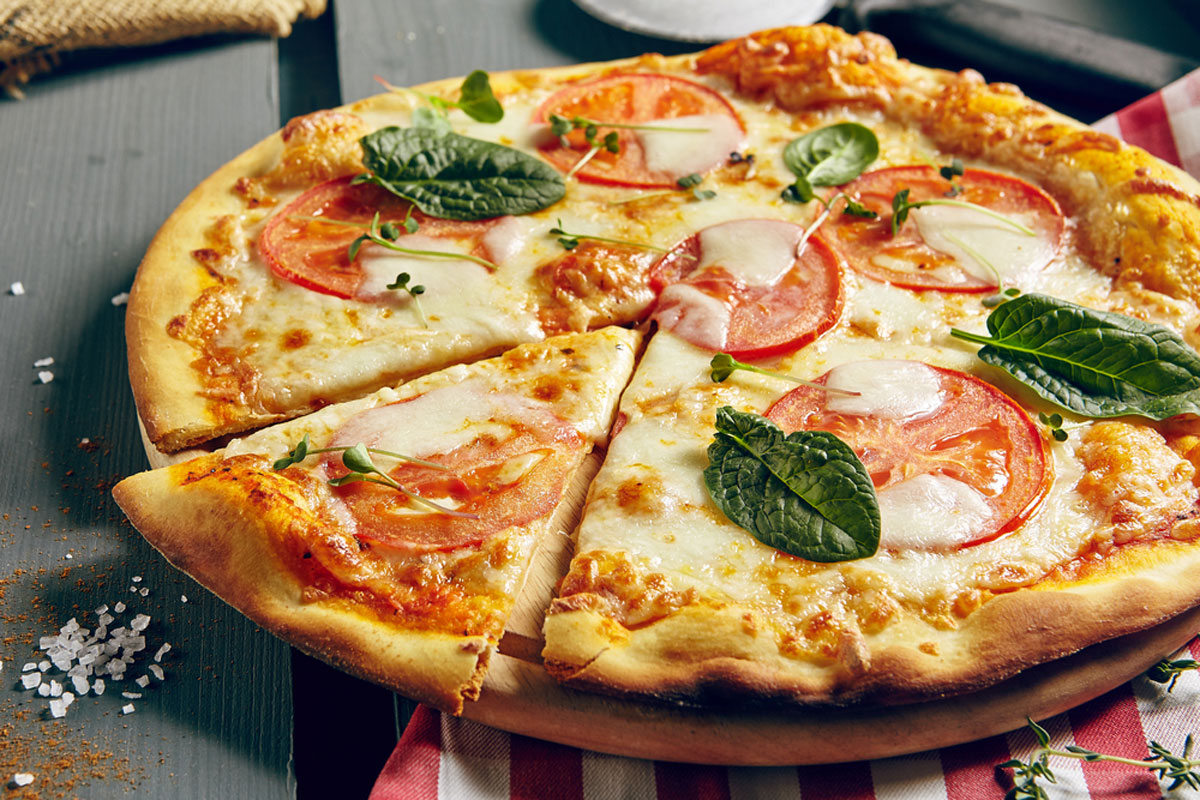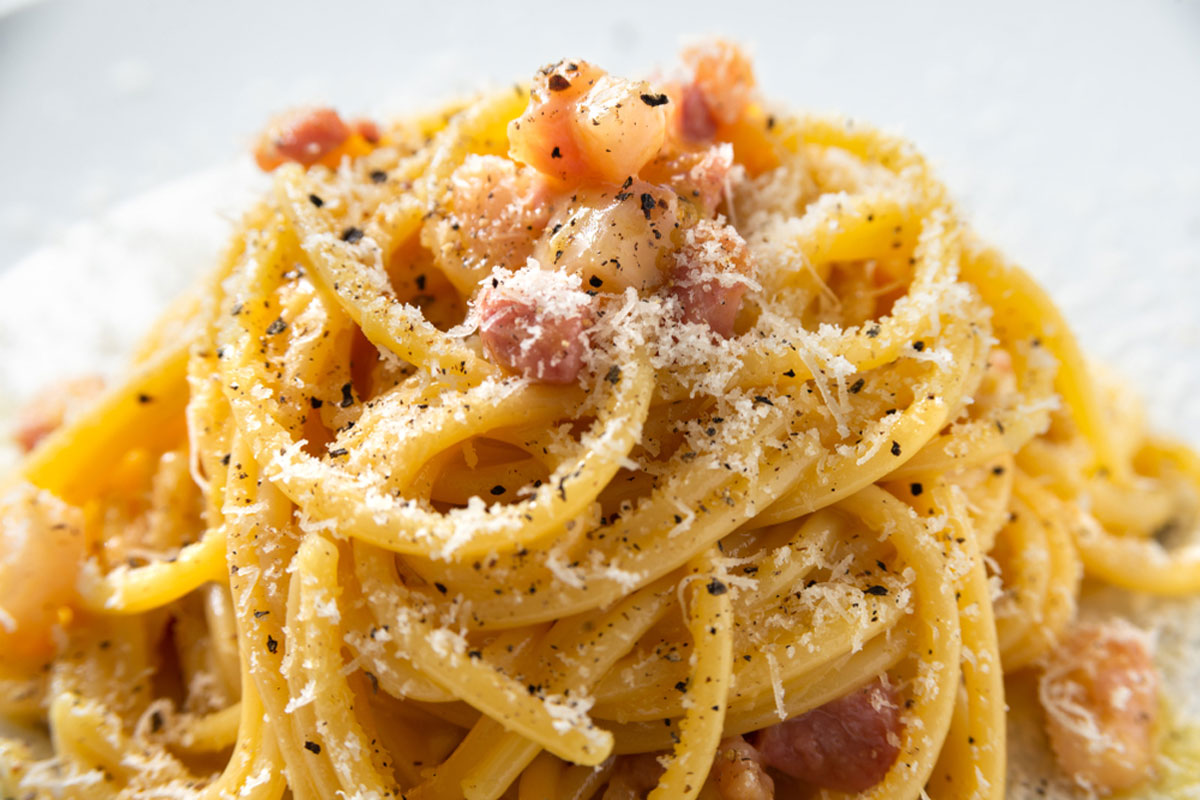Italy is renowned for its rich culinary heritage, from comforting pasta dishes to flavorful pizzas and decadent desserts. While traveling to Italy may not always be feasible, the digital world offers us the opportunity to explore the depths of Italian cuisine from the comfort of our homes. Now let us embark on a virtual taste tour of Italy, delving into its regional specialties, time-honored recipes, and the stories behind its beloved dishes.
Regional Cuisine Showcase:
In Italy, culinary traditions are deeply rooted in the regional diversity of the country, with each area boasting its own distinctive flavors, ingredients, and cooking techniques. Let’s delve deeper into the rich tapestry of regional cuisine across Italy:
Tuscany:
Tuscany, with its rolling hills and fertile countryside, is renowned for its rustic and hearty dishes. Dive into the comforting flavors of Tuscan cuisine with dishes like ribollita, a hearty vegetable and bread soup that epitomizes cucina povera (peasant cooking). Another Tuscan favorite is bistecca alla fiorentina, a thick-cut T-bone steak grilled over an open flame and seasoned simply with olive oil, salt, and pepper. The secret to Tuscan cuisine lies in its use of high-quality, locally sourced ingredients such as extra virgin olive oil, wild boar, and Pecorino cheese.
Sicily:
Sicilian cuisine reflects the island’s history of conquest and trade, blending influences from Greek, Arab, Spanish, and Norman cultures. Explore the vibrant flavors of Sicily with dishes like pasta alla Norma, a pasta dish topped with a rich tomato sauce, fried eggplant, and grated ricotta salata cheese. For a taste of Sicilian street food, try arancini, golden-fried rice balls stuffed with ragù, peas, and mozzarella. Seafood also plays a prominent role in Sicilian cuisine, with dishes like sarde a beccafico (stuffed sardines) and pesce spada alla ghiotta (swordfish stew) showcasing the island’s bountiful coastal resources.
Veneto (Venice):
Venice, with its labyrinthine canals and historic palaces, is famous for its delicate seafood dishes and creamy risottos. Sample the flavors of the Veneto region with dishes like risotto al nero di seppia, a risotto made with squid ink that imparts a rich, briny flavor and striking black color. Another Venetian specialty is baccalà mantecato, a creamy spread made from salted cod that is whipped with olive oil, garlic, and parsley. Venetian cuisine also features an array of fresh seafood, from branzino (European sea bass) to moeche (soft-shell crabs), served simply with lemon and herbs.
By exploring the regional cuisines of Italy, we gain a deeper appreciation for the diverse flavors and culinary traditions that make Italian food so beloved around the world. Whether you’re craving the hearty comfort of Tuscany, the vibrant spices of Sicily, or the delicate seafood of Venice, each region offers a unique gastronomic experience that reflects its cultural heritage and natural bounty. Buon appetito!
Pasta Perfection:
Southern Italy:
In the sunny regions of southern Italy, pasta takes center stage in many iconic dishes. Spaghetti alle vongole, featuring spaghetti cooked with fresh clams, garlic, white wine, and parsley, is a beloved coastal favorite. Another classic is pasta puttanesca, a flavorful dish made with spaghetti tossed in a sauce of tomatoes, olives, capers, garlic, and anchovies. And while spaghetti and meatballs is often associated with Italian-American cuisine, it’s also enjoyed in southern Italy, albeit with smaller meatballs and a lighter tomato sauce.
Bologna (Emilia-Romagna):
Emilia-Romagna, often hailed as the culinary heart of Italy, is renowned for its rich and hearty pasta dishes. Tagliatelle al ragù, known outside of Italy as Bolognese sauce, is a signature dish featuring flat ribbons of pasta coated in a savory meat sauce made with ground beef, pork, and veal, simmered slowly with tomatoes, wine, and aromatic vegetables. Another regional specialty is tortellini en brodo, delicate stuffed pasta parcels served in a flavorful broth, perfect for warming up on a chilly day.
Rome (Lazio):
In the bustling capital city of Rome, pasta dishes are celebrated for their simplicity and bold flavors. One of the most famous Roman pastas is spaghetti carbonara, a deceptively simple yet indulgent dish made with spaghetti tossed in a sauce of eggs, Pecorino Romano cheese, pancetta or guanciale (cured pork jowl), and black pepper. Cacio e pepe is another Roman classic, featuring spaghetti or tonnarelli (thick spaghetti) coated in a sauce of Pecorino Romano cheese, black pepper, and a bit of pasta cooking water to create a creamy emulsion.
Homemade Pasta:
While dried pasta is convenient and widely available, nothing beats the taste and texture of homemade pasta. To master the art of pasta-making at home, start with a basic recipe for fresh egg pasta dough, made with flour, eggs, and a pinch of salt. Experiment with different shapes and styles of pasta, from simple tagliatelle and fettuccine to stuffed ravioli and delicate gnocchi. Remember to use high-quality ingredients and take your time rolling and shaping the dough for the best results.
By taking a virtual tour of Italy’s pasta varieties and mastering the art of homemade pasta, you can explore the rich and diverse world of Italian cuisine from the comfort of your own kitchen. Whether you’re craving the comforting flavors of southern Italy, the rich sauces of Bologna, or the simple elegance of Roman classics, there’s a pasta dish to satisfy every palate. Buon appetito!
Pizza Passion:
Pizza, a culinary masterpiece that transcends borders and brings people together, has a captivating history that begins in the vibrant streets of Naples and stretches across the globe. Let’s take a journey through the evolution of pizza:
Origins in Naples:
Pizza traces its origins back to Naples in the 18th century, where it emerged as a humble street food for the city’s working class. The classic Neapolitan pizza, known as Pizza Margherita, pays homage to Queen Margherita of Savoy and features a simple topping of tomato sauce, fresh mozzarella cheese, and basil leaves, representing the colors of the Italian flag. The use of San Marzano tomatoes and buffalo mozzarella, prized for their superior quality and flavor, elevates the Neapolitan pizza to culinary perfection.
Global Spread:
In the late 19th and early 20th centuries, Italian immigrants brought their love of pizza with them as they settled in cities around the world, from New York to Buenos Aires. Pizza parlors and pizzerias began popping up in urban centers, serving up slices of comfort and nostalgia to hungry patrons. Over time, pizza evolved to reflect the tastes and preferences of different cultures, leading to the creation of unique regional variations and topping combinations.
Roman Style:
In Rome, pizza takes on a different form with the emergence of pizza al taglio, or pizza by the slice. Unlike the soft and chewy crust of Neapolitan pizza, Roman-style pizza features a thin and crispy crust that is baked in rectangular pans and cut into squares. Toppings range from classic Margherita to inventive combinations like potato and rosemary or zucchini and ricotta. Pizza al taglio is perfect for grabbing a quick and satisfying snack on the go.
Northern Italian Varieties:
In northern Italy, pizza undergoes further experimentation and innovation, with chefs incorporating local ingredients and flavors into their creations. Pizzas topped with prosciutto, arugula, and shaved Parmigiano-Reggiano cheese showcase the elegance and sophistication of northern Italian cuisine. Gourmet toppings such as truffle oil, wild mushrooms, and speck (smoked prosciutto) add a touch of luxury to the humble pizza pie.
Modern Trends:
Today, pizza continues to evolve with the rise of artisanal pizzerias and innovative chefs pushing the boundaries of traditional pizza-making. From wood-fired ovens to sourdough crusts and plant-based toppings, there’s no limit to the creativity and experimentation in the world of pizza. Whether you prefer a classic Margherita or a bold and adventurous flavor combination, pizza remains a beloved symbol of Italian culinary heritage and global gastronomy.
By exploring the history of pizza and its diverse regional variations, we gain a deeper appreciation for this iconic dish and the cultural significance it holds around the world. From the streets of Naples to the bustling pizzerias of New York City, pizza continues to unite people across borders and generations with its irresistible combination of flavors and textures. Buon appetito!

Dolce Delights:
Indulging in Italian desserts is like taking a journey through layers of history, tradition, and culinary innovation. Let’s embark on a virtual trip to Italy’s pastry shops and gelaterias to explore the irresistible world of dolce delights:
Tempting Tiramisu:
Tiramisu, meaning “pick me up” in Italian, is a classic dessert that embodies the essence of Italian indulgence. Layers of espresso-soaked ladyfingers are sandwiched between creamy mascarpone cheese and dusted with cocoa powder, creating a harmonious blend of flavors and textures. The origins of tiramisu are shrouded in mystery, with competing claims from the regions of Veneto and Friuli-Venezia Giulia, but its popularity knows no bounds. (Try Our Delicious Tiramisu Recipe)
Sicilian Cannoli:
Cannoli, crispy pastry shells filled with sweetened ricotta cheese and embellished with candied fruit, chocolate chips, or pistachios, are a beloved specialty of Sicily. These iconic treats are a testament to the island’s multicultural heritage, with influences from Arab, Spanish, and Norman cuisines. The delicate balance of crunchy shell and creamy filling makes cannoli a delightful indulgence for any occasion. (Try Our Authentic Cannoli Recipe)
Gelato Galore:
Gelato, Italy’s answer to ice cream, is a frozen treat that has captivated taste buds around the world with its creamy texture and intense flavors. From classic flavors like stracciatella and pistachio to innovative combinations like olive oil and sea salt, gelato offers endless possibilities for exploration. (Try Our Creamy Decadent Gelato Recipe)
Silky Panna Cotta:
Panna cotta, meaning “cooked cream” in Italian, is a silky-smooth dessert that melts in your mouth with each spoonful. Made with cream, sugar, and gelatin, panna cotta serves as a blank canvas for a variety of flavorings, from vanilla bean and fresh berries to coffee and chocolate. Its simplicity belies its elegance, making it a favorite choice for dinner parties and special occasions. (Try Our Silky Smooth Panna Cotta Recipe)
Biscotti Brilliance:
Biscotti, also known as cantucci, are crisp, almond-studded cookies that are perfect for dunking into a cup of espresso or Vin Santo wine. Originating in Tuscany, biscotti have a long history dating back to the Roman Empire, when they were a staple food for soldiers and travelers. Today, biscotti come in a variety of flavors and variations, from traditional almond to chocolate chip and cranberry-orange. (Try Our Traditional Biscotti Recipe)
By exploring the sweet delights of Italian cuisine, we not only satisfy our cravings for indulgence but also gain a deeper appreciation for the cultural significance and culinary craftsmanship behind each dessert. Whether it’s the comforting familiarity of tiramisu, the exotic allure of cannoli, or the refreshing simplicity of gelato, Italian desserts offer a taste of la dolce vita that transports us to the sun-drenched streets of Italy with every bite. Buon appetito!
Wine and Dine:
Embark on a sensory journey through Italy’s renowned wine regions, where centuries-old vineyards produce some of the world’s most esteemed wines. From the rolling hills of Tuscany to the majestic slopes of Piedmont and the sun-drenched vineyards of Sicily, each region offers a unique terroir and grape varietals that contribute to Italy’s rich winemaking heritage.
Tuscany:
Tuscany, with its picturesque landscapes and medieval villages, is synonymous with wine production. Explore the sun-kissed vineyards of Chianti, where Sangiovese grapes thrive in the region’s clay-rich soil. Chianti Classico, with its notes of cherry, plum, and earthy undertones, is the quintessential Tuscan red wine and pairs beautifully with hearty Tuscan dishes like ribollita and bistecca alla fiorentina. For a taste of luxury, indulge in a glass of Brunello di Montalcino, made from 100% Sangiovese grapes and aged to perfection in oak barrels.
Piedmont:
Piedmont, nestled in the foothills of the Alps, is renowned for its elegant red wines and prestigious Nebbiolo grape varietal. Explore the vineyards of Barolo and Barbaresco, where Nebbiolo reigns supreme, producing wines with complex aromas of roses, violets, and truffles. Barolo, known as the “King of Wines,” is full-bodied and tannic, making it an ideal companion for rich and savory dishes like braised meats and aged cheeses. For a lighter option, try Barbera d’Asti or Dolcetto, which pair beautifully with Piedmont’s famous white truffles and creamy risottos.
Sicily:
Sicily, the largest island in the Mediterranean, boasts a diverse landscape and a long history of winemaking. Explore the volcanic slopes of Mount Etna, where Nerello Mascalese and Nerello Cappuccio grapes thrive in the mineral-rich soil. Etna Rosso, with its vibrant acidity and earthy flavors, pairs beautifully with Sicilian specialties like pasta alla Norma and grilled swordfish. For a taste of Sicily’s sun-drenched terroir, indulge in a glass of Nero d’Avola, a robust red wine with notes of dark fruit and spice, perfect for pairing with hearty meat dishes and aged cheeses.
Pairing Suggestions:
When it comes to pairing Italian wines with food, the key is to complement the flavors and textures of the dish with the characteristics of the wine. For example, a light and fruity Chianti Classico pairs well with tomato-based pasta dishes and grilled vegetables, while a full-bodied Barolo enhances the richness of braised meats and truffle risottos. Sicilian wines like Etna Rosso and Nero d’Avola are versatile enough to pair with a wide range of dishes, from seafood to spicy Sicilian sausages and aged pecorino cheese.
By exploring Italy’s diverse wine regions and mastering the art of food and wine pairing, we gain a deeper appreciation for the cultural significance and culinary traditions that have shaped Italian cuisine. Whether you’re sipping on a glass of Chianti in Tuscany, savoring a Barolo in Piedmont, or enjoying a Nero d’Avola in Sicily, each wine offers a taste of Italy’s rich winemaking heritage and terroir-driven flavors. Salute!
Our Favorite Italian Recipes
Description: Fettuccine Alfredo is a classic Italian pasta dish featuring long, flat noodles tossed in a rich and creamy sauce made from …
Description: Risotto alla Milanese is a creamy and luxurious Italian rice dish flavored with saffron, giving it a vibrant yellow color and …
Description: Margherita Pizza is a quintessential Neapolitan pizza known for its simplicity and fresh ingredients. It features a thin, crispy crust topped …
Description: Spaghetti Carbonara is a classic Roman dish known for its creamy, savory sauce made with eggs, Pecorino Romano cheese, guanciale (or …
Description: Panna Cotta, meaning “cooked cream” in Italian, is a creamy and luxurious Italian dessert made by simmering sweetened cream with gelatin …
